You should never be ashamed of any harvest and I’ll share with you why I’m not ashamed of my onion harvest. First, if you have planted a garden give yourself a pat on the back. You are working to put food on your plate and gardening is beneficial to your health for so many reasons. But I know that sometimes you don’t feel like a successful gardener because I’ve had that feeling myself. OFTEN!
My onion harvest this year was almost one of those times of feeling like maybe I should give up on this gardening job and stick to things that I’m good at. But then I remembered that something is better than nothing and that I needed to be thankful that I had onions to harvest.
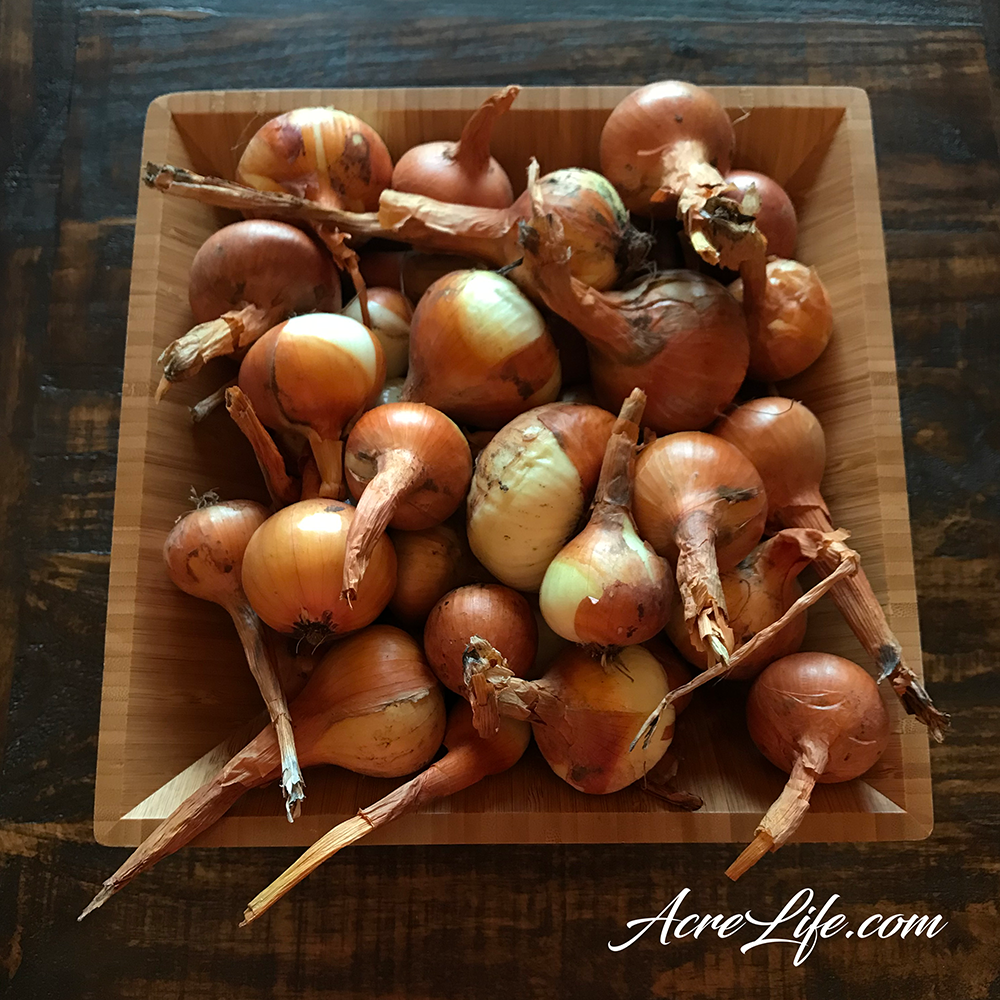
What Was The Problem With My Onions?
My onions were small. They were not the huge bulbs that I was used to from previous harvests. Some of them weren’t much bigger than they were when I planted them. So what happened?
My best guess is that I planted them too late, I put the wrong kind of mulch, and I didn’t fertilize them enough. I had let my compost bin dry up and I wasn’t adding to it so I didn’t have free fertilizer and was too cheap and lazy to go buy some. The great thing about gardening is that you get a chance to learn from your mistakes and you just have to wait a few months and you get to try again.
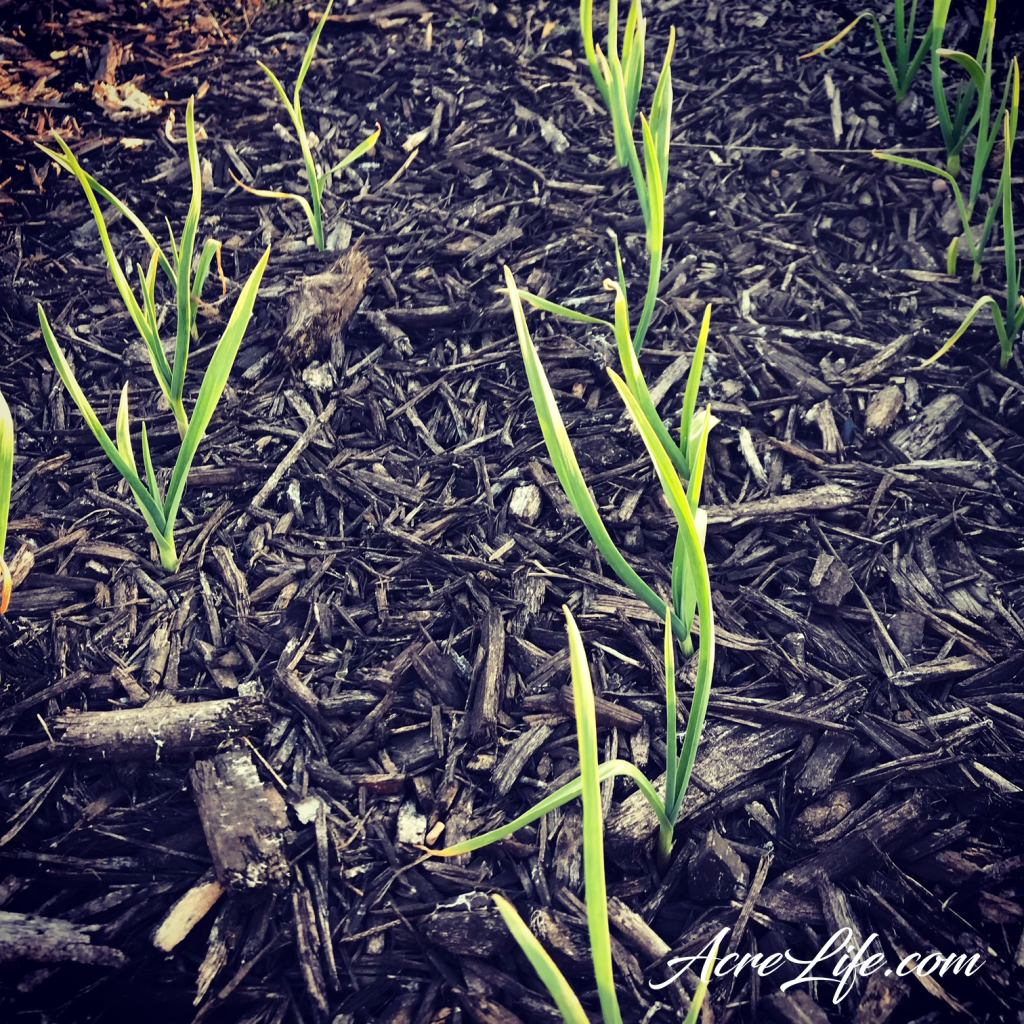
Why I’m Not Ashamed Of My Onions?
After I had my pity party I brought my meager onion harvest inside to process for storage. I cut some into large slices for fajitas and diced some for soups. To my surprise there was a good amount to store. I decided that I would freeze them since it was a small harvest. I figured they would only last a few months anyways. To my surprise they lasted about 6 months. But best of all, they tasted amazing.
Every time I used onions out of the freezer, I was reminded of how I felt like a failure when I first pulled my onions out of the ground. And then I was reminded to be thankful for what I have, instead of ashamed of what I did wrong.
Tips For Growing Large Onions
As I mentioned earlier, gardening gives you a chance to learn and do better next time. Below are my tips for growing large onions that you can be proud of.
- Plant your onions early
- Fertilize
- Water
- Mulch
- Weed
- Prevent Disease
I found this great article from Savvy Gardening about planting onions from seeds rather than from sets. I have always grown my onions from sets but I think I’m going to try this method of winter sowing this year.
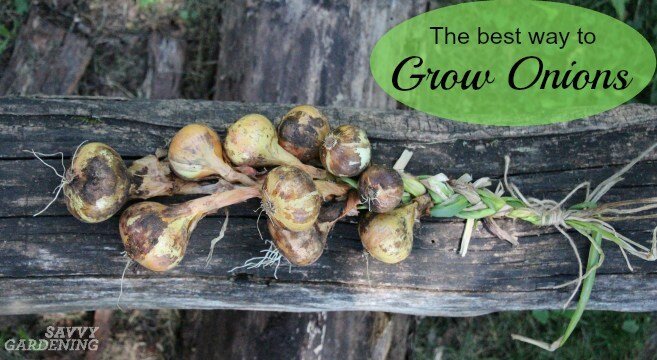
When To Plant Onions
Like with any crop, this depends on your planting zone. If you are in the north you will want to plant your onion sets in early spring as soon as the ground can be worked – late March or early April. If you are in the south like me you should plant your onion sets in late fall or early winter. I love fall gardening because of the great crops you can plant.
If you choose to plant from seeds you will want to start them indoors about 6 weeks before you plan to move them outside. If you live in Zone 8 or 9 you can also sow seeds directly into the soil in mid to late October. Or you can try the winter sowing method mentioned in the article by Savvy Gardening.
Fertilizing Your Onions
Preparing your soil before planting will give your onions a better chance of growing to their full potential. Add a phosphorous rich fertilizer (10-20-10) to the soil before transplanting or sowing seeds. Onions require a nitrogen heavy fertilizer (21-0-0) to grow. The first application should be 3 weeks after planting and then every 2-3 weeks until the soil begins to crack around the bulb. When this occurs you will know that the growing cycle is complete and you won’t need to fertilize anymore.
Water Your Onions Often
Always make sure that you water your onions after fertilizing. Then keep the soil moist during the growing period. You should never let the soil completely dry out. However, you want to avoid over-watering to prevent disease and rot. A soaker irrigation system works well for watering deep within the soil while avoiding getting the leaves wet.
Water should be applied at a depth of 1-2 inches per week until the soil starts to crack around the bulb. After your onion starts bulbing you should increase the water to 3-4 inches per week. The onions will need the most water during this time to plump up.
Mulch Your Onions
Adding mulch around your onions will help preserve the moisture in the soil and prevent excess weed growth. Straw mulch works well for onions. You can also use leaves if you have access to trees. I bag leaves every fall and save them for the compost and for mulching.
Mulching onions is a little tricky because the stems are small and delicate. You have 2 options available. Wait a few weeks until the stems get bigger and then put your mulch down between your rows. This option should work well as long as you keep an eye on weeds that may start to grow. The second option is to alternate planting and mulching. Put down a row of mulch. Plant a row of onions. Then put down another row of mulch. Alternate until you have planted all of your rows.
Keep the mulch from coming into contact with the stems so that you don’t introduce disease into the plants. Also make sure to move the mulch out when the bulbs begin to show to make sure that they have plenty of room to grow without touching wet mulch.
Keep Weeds Away From Onions
Weeds will fight for the nutrients and water in the soil and could also be a source of disease. Mulching should cut down on weeds significantly. You may also need to pull weeds by hand in order to keep your onions free of weeds. Be careful when weeding with tools so that you don’t damage the bulbs.
You can also treat the soil with a pre-emergent prior to planting and then add weed control products labeled to work during the growing season. I would only use this method if you are growing a very large crop of onions. If you just have a personal garden, I would recommend mulching and hand pulling weeds to keep your harvest more organic.
Prevent Disease From Affecting Onions
The most common disease that affects onions is leaf blight. Make sure that the soil is well-drained. Water early in the day to give the leaves plenty of time to dry out. The best watering practice is to use a soaker irrigation system or water close to the base of the plant to avoid getting the leaves wet at all.
Of course, you can’t control mother nature. Keep an eye on your onions during times of heavy rainfall or wet and soggy conditions. If you do notice your leaves turning pale green and then yellow or developing white lesions you should take action to prevent the spread of the disease.
Treat blight with a fungicide such as Ortho Insect Mite & Disease 3-in-1 at the first sight of disease.
Rotating your crops can also help prevent disease. Don’t plant onions in the same area every year. To get a good onion harvest, plant onions where your corn, carrots, turnips, kale, brussels sprouts, or cauliflower grew last year.
Harvest Your Onions
Your onions are fully mature when the tops fall over. Pull your onions out of the ground and cure them. To cure, lay your onions in a breezy, shaded area outside until they completely dry. Once the onions are dry clip off the roots and cut the stem to about 1 inch.
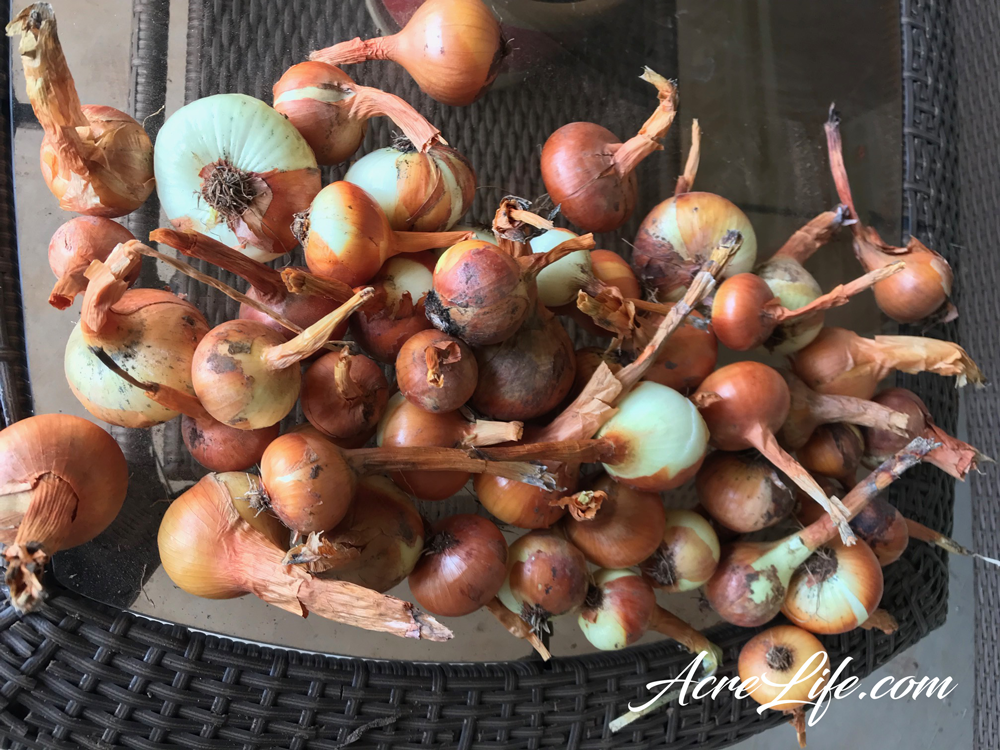
There are many ways to store your onions. My favorite method is freeze-drying. As I mentioned with this year’s small harvest, I chose to chop them up and put them in the freezer. You can also store them in a mesh bag for short term storage, or in nylon stockings for longer storage.
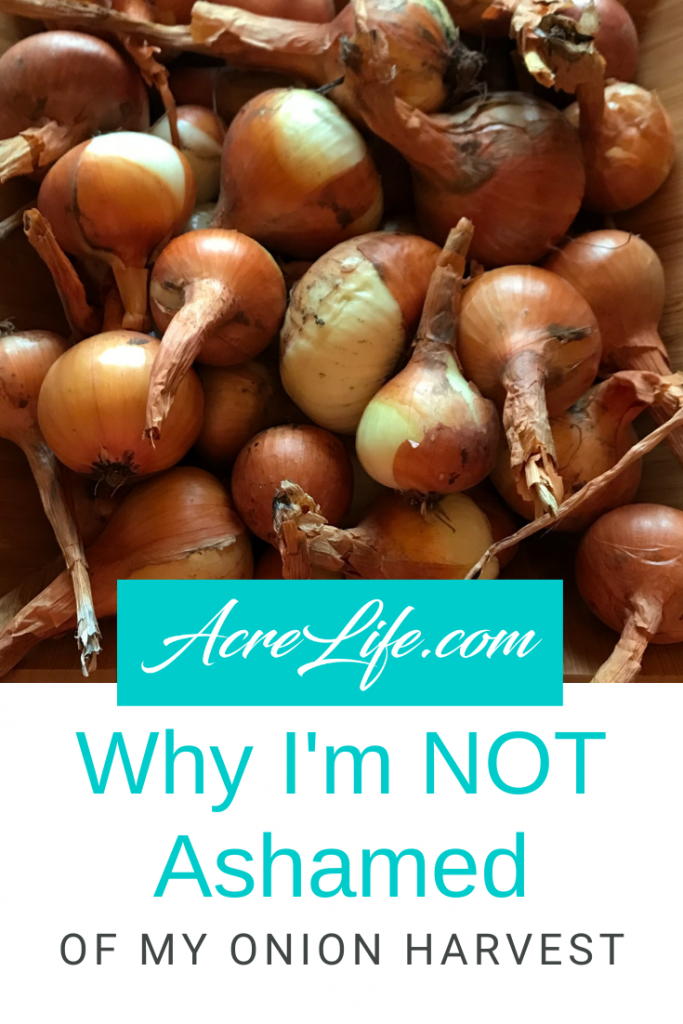
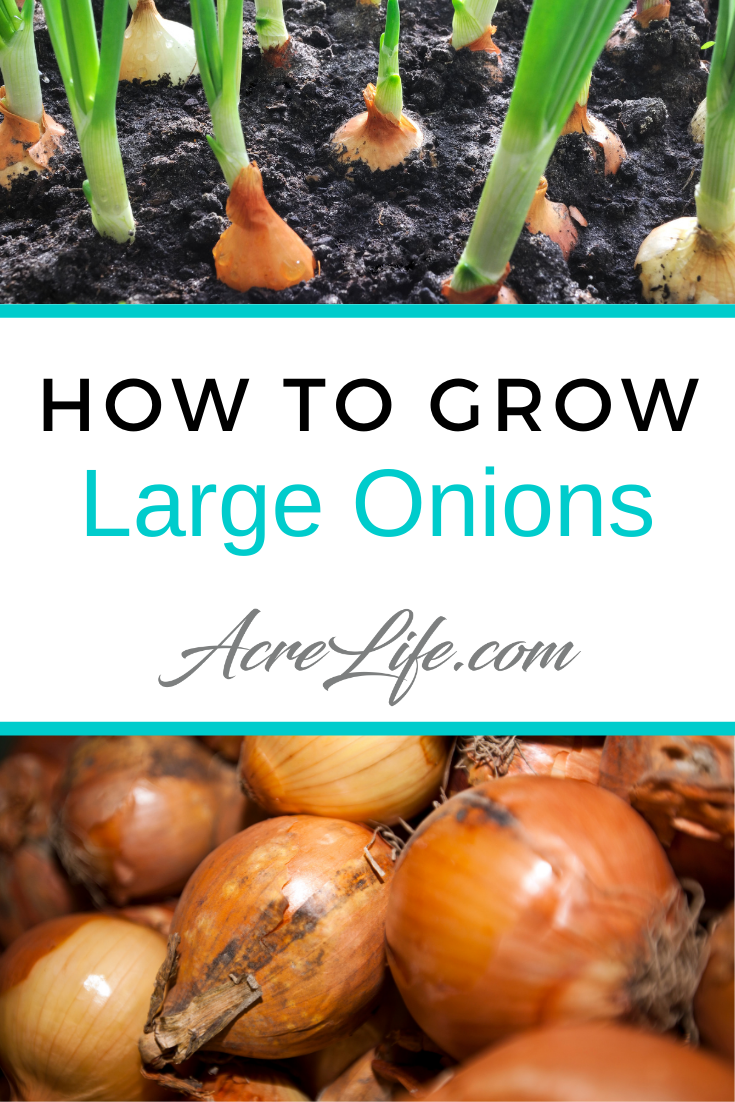
Leave a Reply